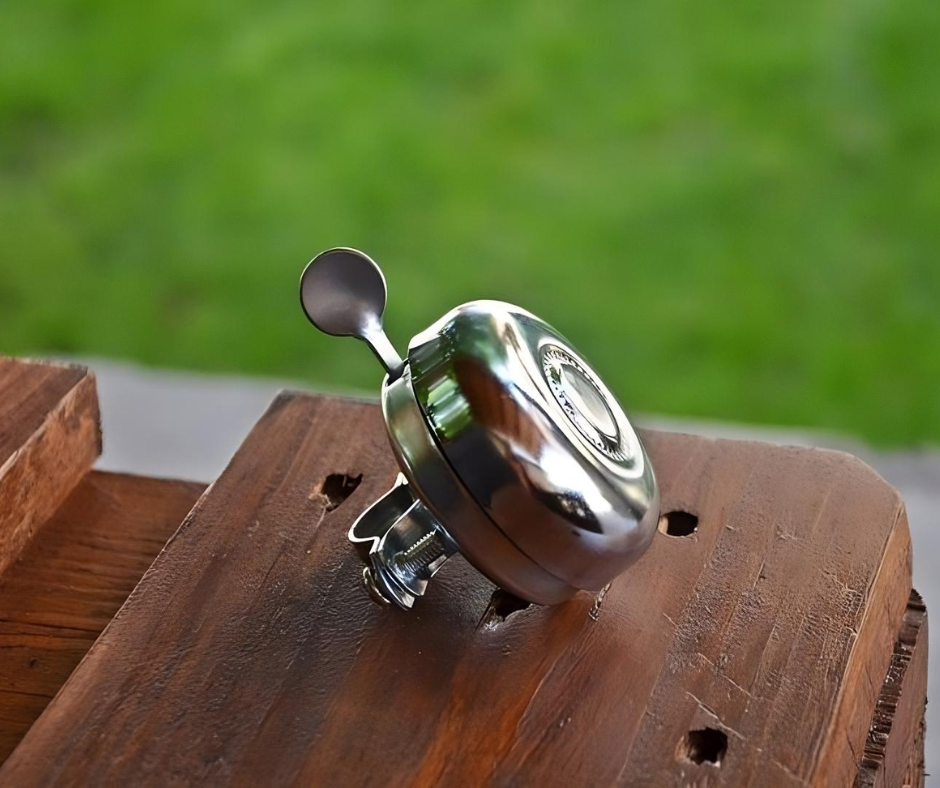In the rich history of cycling, few accessories are as iconic as the vintage bicycle bell. Dating back to the late 1800s, the bicycle bell emerged as an essential safety feature, designed to help cyclists navigate roads with greater ease and alert others to their presence. Over time, the humble bell evolved in style and function, becoming a beloved accessory and a symbol of the cycling experience. Today, even with advancements in bike safety technology, the vintage bicycle bell retains a timeless charm that resonates with cyclists, collectors, and enthusiasts alike.
Let’s take a journey through the origins, evolution, and lasting appeal of the vintage bicycle bell.
The Origins of the Bicycle Bell: Early Safety on Wheels
Cycling dates back to the early 19th century, but it wasn’t until the late 1800s, during cycling’s rise in popularity, that the bicycle bell became an essential feature. The introduction of bells addressed a pressing need: how could cyclists safely alert pedestrians, other riders, or drivers of their approach? As bicycles became more common on roads shared with horse-drawn carriages and pedestrians, the need for a reliable signaling device became clear.
The first bicycle bells were simple in design, usually crafted from brass and operated by a lever or button. They produced a single, distinct “ding” or “clang,” providing a clear and effective sound to warn others. This straightforward design was robust and effective, ensuring that cyclists could make their presence known, especially in crowded areas. The bicycle bell quickly became a standard component of bicycles, marking an early step in cycling safety.
The Evolution of the Bicycle Bell: Style Meets Function
As cycling gained popularity in the early 20th century, bicycle bell designs evolved to cater to the growing number of riders and their preferences. Manufacturers began to experiment with different styles, sounds, and materials. The iconic “ding-ding” sound became widely associated with bicycles, adding personality to the bell while maintaining its function as a safety device. The two-tone chime was not only distinctive but also pleasant, alerting others without startling them.
Bicycle bells also began to vary in shape and design. Traditional round bells were joined by dome-shaped versions, streamlined for style and aerodynamics, and novelty bells featuring colorful patterns or unique shapes. These bells became a personal statement, allowing riders to add a touch of individuality to their bicycles. The evolution of the bicycle bell reflected the growing culture of cycling, where bikes became more than transportation—they were expressions of personal style and lifestyle.
The Bicycle Bell as Both Functional and Stylish

Vintage bicycle bells served not only as safety devices but also as decorative accents. Mounted on handlebars, these bells added a unique charm and flair to the bicycle, becoming almost as essential as the wheels themselves. Cyclists could choose from a wide range of designs, each one tailored to different tastes and preferences, transforming a simple safety device into a stylish accessory.
In cities bustling with pedestrians and vehicles, these bells provided an essential means of communication. Riders used them to signal turns, approach busy intersections, and make their presence known on narrow streets and pathways. The simplicity and reliability of the bicycle bell meant that it required little maintenance, making it a practical addition to any bike. This mix of function and style ensured that the bell remained a staple in cycling culture for generations.
The Enduring Legacy of the Vintage Bicycle Bell
Despite advances in bike safety, from reflective lights to electronic horns, the vintage bicycle bell has retained its charm and appeal. Its distinctive sound has become a symbol of cycling itself, evoking a sense of nostalgia that brings to mind leisurely rides through parks and tree-lined streets. For many cyclists, the bell’s familiar “ding-ding” is an irreplaceable part of the riding experience, a comforting reminder of simpler times.
In contemporary cycling, vintage-style bells are still widely available and appreciated for their nostalgic appeal. Modern bells may incorporate sleek designs or lightweight materials, but the essence remains the same. Cyclists around the world continue to embrace the classic bicycle bell, valuing it not only for its functionality but also for the timeless quality it brings to their rides.
Collecting Vintage Bicycle Bells: A Piece of Cycling History

For collectors and cycling enthusiasts, vintage bicycle bells are more than just accessories; they are artifacts of a bygone era. Each bell tells a story of cycling’s evolution, offering a glimpse into the past when bicycles were simpler and roadways less crowded. Collectors cherish these bells for their craftsmanship, durability, and the memories they hold. Some bells feature intricate engravings or unique chime mechanisms, showcasing the artistry and ingenuity of early manufacturers.
Collectors seek out vintage bicycle bells for their historical value, aesthetic appeal, and the connection they provide to the roots of cycling. These bells often hold significant sentimental value, representing a shared history of exploration, adventure, and freedom on two wheels. To own a vintage bicycle bell is to own a piece of cycling heritage—a reminder of the journey and the joy of the ride.
Modern Cycling and the Vintage Bell Appeal
Today, many cyclists choose to equip their bikes with vintage-style bells despite the availability of electronic alternatives. For some, it’s about keeping a piece of tradition alive; for others, it’s the unique sound that only a mechanical bell can provide. Vintage bells create a distinct chime that’s pleasant, recognizable, and effective—a sound that has come to represent cycling itself.
These bells are often seen on classic bikes or retro-style cruisers, where they complete the look and feel of the ride. But they also appear on modern bicycles, where cyclists appreciate their simplicity and charm. The appeal of the vintage bicycle bell endures because it connects us to the past, reminding us that sometimes, the simplest solutions are the best.
Conclusion: The Vintage Bicycle Bell – A Timeless Symbol of Cycling Culture
The vintage bicycle bell is much more than a tool; it’s a symbol of cycling’s rich history, culture, and sense
As we ride into the future, the “ding-ding” of the vintage bicycle bell remains a familiar and cherished sound. It’s a reminder of where we’ve been and an invitation to enjoy the journey ahead—one ring at a time. Whether used for safety, style, or nostalgia, the vintage bicycle bell celebrates the joy of cycling, the beauty of tradition, and the enduring appeal of simplicity.


